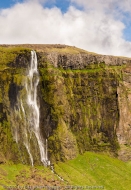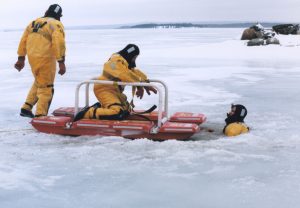


Normally I try to make these articles about my photography, or at least my photo adventures, and not so much about me personally, but this latest change in my life is likely to affect my photographic opportunities so greatly that I simply have to tell you about it!
I joined the United States Coast Guard!
Now, before you pack me off to boot camp or start making jokes about my age, I should point out that there are several ways to work with the Coast Guard, and they don’t all involve full-time military committment.
Members of the Coast Guard can be:
As I’m sure you’ve already guessed, I joined the Coast Guard Auxiliary as a volunteer. So no boot camp for me. I didn’t commit to four years of service or anything like that. I simply agreed (pledged, actually) to follow their rules while wearing the Coast Guard uniform, and pay annual dues to my local flotilla – not too much to ask, I don’t think.
Here’s the role of the Auxiliary as defined in the official Auxiliary Manual:
The Coast Guard is a military service and is a component of the U.S. Armed Forces. The Coast Guard Auxiliary is a component of Coast Guard Forces like the active duty, Reserve, and civilian components. Thus, the Auxiliary may be referred to and considered to be included under the general organizational umbrella of the Coast Guard. Auxiliarists are not contractually bound, enlisted, or commissioned officers, but are volunteers pledged to serve in the Coast Guard Auxiliary. The Coast Guard is also charged with many civil responsibilities in addition to its military missions.
It goes on to say that we cannot get involved in military or law enforcement activities, but aside from that, we can do just about anything that we’re trained and physically able to do, and that is potentially a huge list!

New Orleans – Coast Guard Auxiliary and active duty members work together during a training exercise to prepare for search and rescue missions. Dec. 10, 2008. The auxililiary have been a valuable asset to the Coast Guard and boater safety since 1939. U.S. Coast Guard photo by Seaman Ivan Barnes.
The Auxiliary was established by Congress in 1939 as the Volunteer Reserve to conduct domestic missions while the Active Duty Coast Guard and Reserve components were deployed during World War II. Renamed the Auxiliary in 1941 to better distinguish it from the Reserve, it boasts a membership of over 30,000 members, which is not that far behind the number of Active Duty personnel!
The primary focus of the Auxiliary these days is to promote recreational boating safety by offering safety training for boaters (Public Education), voluntary vessel safety checks for boat owners (Vessel Examinations), and encouraging the use of life jackets while on the water. But while RBS may make up the majority of Auxiliary activities, it’s just the tip of the iceberg of what Auxiliarists can potentially do. In fact, here’s a partial list:
Whew! That’s quite a list, isn’t it? And you see those items in bold? Those are the items I’ll probably be focusing on at first.

Coast Guard active duty and auxiliarist members practice ice rescues on one of the Great Lakes. (L to R Diana Roney, Aux., MK2 Bob Pembridge and Jeremiah Den Boer, Aux.) USCG photo by Robert Denboer
OK, I’ll come clean. I’m in it for the adventure! Right now I’m working to get myself trained and qualified in many different disciplines so as to become as valuable to the Coast Guard as I possibly can. And that, hopefully, will open the doors to some interesting opportunities. So stay tuned for future adventures!
Oh, so what’s this Semper Paratus business? It’s Latin for “Always Ready” and is the motto of the United States Coast Guard, along with their marching song, Semper Paratus. “From Aztec Shore to Arctic Zone…”. Hey, don’t forget the Antarctic Zone! 😉
The views expressed herein are those of the blogger and are not to be construed as official or reflecting the views of the Commandant or of the U.S. Coast Guard.

This is fantastic! A great adventure!
Stay Ready, Eddie!
Excited about the new direction
Congratulations, Ed! It’s always exciting to start something new.
Congratulations, what a great way to give back or pay it forward in life..